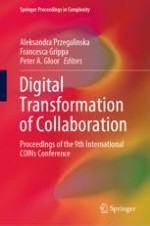2020 | OriginalPaper | Chapter
13. Digital Coworker: Human-AI Collaboration in Work Environment, on the Example of Virtual Assistants for Management Professions
Authors : Konrad Sowa, Aleksandra Przegalinska
Published in: Digital Transformation of Collaboration
Publisher: Springer International Publishing
Activate our intelligent search to find suitable subject content or patents.
Select sections of text to find matching patents with Artificial Intelligence. powered by
Select sections of text to find additional relevant content using AI-assisted search. powered by
